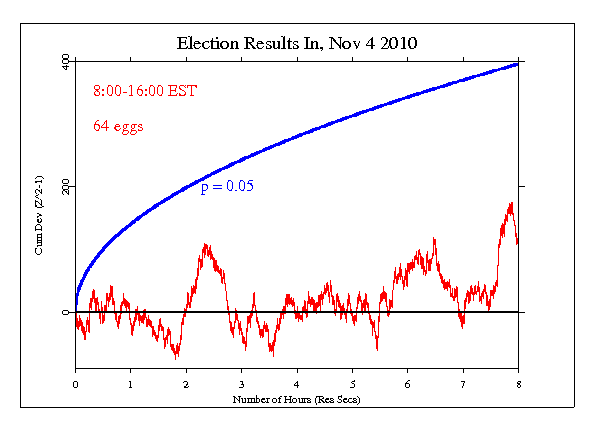|
Doug D'Elia suggested that the 2010 election should be
treated as was the 2006 election. I agreed, though this was
again a US centric event. Arguably there was
a kind of balance because of power shifts in both cases,
and a large emotional investment.
A sweeping Republican takeover of the House
of Representatives in the Tuesday Nov 3 2010 midterm election
and closer balance in the Senate were attributed in exit polls
to frustration with President Obama and the Democrats' failure to boost the
economy and reduce unemployment.
The changeover for the house was clear by Wednesday morning,
but it appeared likely that Democrats would continue to control the
senate.
A persistent theme in media reports was that
voters were angry and wanted change -- and the old adage
that all politics is local again did not apply this year.
The failure of the Democratic congress to get the national economy moving
spilled over into many states' congressional and
gubernatorial elections.
Many voters said they would vote Republican even without
knowing the candidates.
A major new force in the elections was the Teaparty, whose
candidates most vociferously expressed dissatisfaiction
with the status quo, and who fielded many conservative
candidates. Some of these have won, though several of the
most radical were not accepted by the voters. In any case,
the election, as was the case 4 years ago, resulted in a
shift of power in the congress, with the Republicans taking
some 60 seats to become the majority.
The formal event was set as an 8 hour period beginning at
8:00 AM Wednesday morning, when the news organizations were
declaring the Republicans winners in the house, while
continuing to regard the senate as in question. The results
show a positive but not significant outcome with Chisquare
28916.4 on 28800 df, for p=0.313 and Z=0.487.

Upon seeing the results, and mindful of the post hoc nature
of a new specification, Doug wondered whether the more
appropriate timing would be the election night, when there
might be more mass interest. I did an exploration
(non-formal) to look at the data from 8 pm on Tuesday. As
the following figure shows, it doesn't much matter. Again
there is no persistent deviation.

It is important to keep in mind that we have only a tiny
statistical effect, so that it is always hard to distinguish
signal from noise. This means that every "success" might be
largely driven by chance, and every "null" might include a
real signal overwhelmed by noise. In the long run, a real
effect can be identified only by patiently accumulating
replications of similar analyses.
|